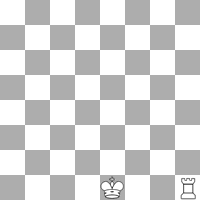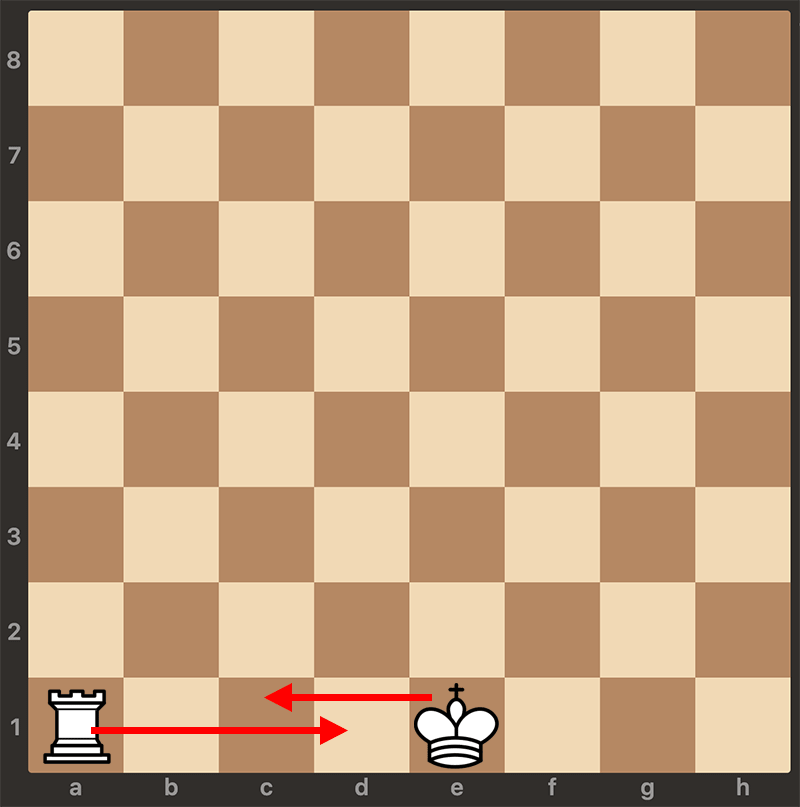The Powerful Tower
The rook, resembling a castle tower in most chess sets, is the second most powerful piece in chess after the queen. Though it begins the game confined to the corners, once activated, the rook becomes a formidable force that can control entire files and ranks, delivering devastating checks and supporting powerful attacks.
The rook moves in straight lines, horizontally or vertically, for any number of squares. This movement can be remembered as forming a plus sign (+) on the board:
- It can move any number of squares along files (vertical columns labeled a through h)
- It can move any number of squares along ranks (horizontal rows labeled 1 through 8)
- It cannot move diagonally or jump over other pieces
- It captures by replacing an enemy piece on its destination square
A rook's power increases dramatically when it controls open files (columns with no pawns) or occupies the 7th rank (2nd rank for Black), where it can attack enemy pawns from behind and restrict the enemy king.
Castling: The Rook's Special Move
Castling is a special move in chess involving both the king and a rook. It's the only time in chess when you can move two pieces in a single turn, and it serves the dual purpose of bringing your king to safety and activating your rook.
 Kingside Castling (0-0)
Kingside Castling (0-0)
King moves two squares toward the h-file, and the rook moves to f1/f8
 Queenside Castling (0-0-0)
Queenside Castling (0-0-0)
King moves two squares toward the a-file, and the rook moves to d1/d8
Requirements for castling:
- Neither the king nor the rook has moved previously
- There are no pieces between the king and the rook
- The king is not in check
- The king does not move through or into a square attacked by an enemy piece
Historical Evolution
The rook is one of the oldest chess pieces, originating from the Persian "rukh" which meant chariot. In ancient Indian chess (Chaturanga), this piece represented a chariot or a war elephant and moved as it does today. The castle-like appearance emerged in Europe during the Middle Ages, reflecting Western military architecture.
Rook vs Bishop
A rook is generally considered more valuable than a bishop (5 points vs 3 points) because it can access all 64 squares on the board, while a bishop is confined to squares of one color. However, in certain closed positions with fixed pawn structures, a bishop's diagonal mobility can be more valuable than a rook's restricted movement.
Strategic Considerations
Mastering rook play is essential for chess improvement. Here are key strategic principles:
Rook Activation Principles
- Open files - Place rooks on files with no pawns
- 7th rank invasion - Control the enemy's 2nd rank
- Connected rooks - Position rooks to protect each other
- Active over passive - Rooks need activity to realize their value
- Lift the rook - Reposition via the 2nd or 3rd rank when needed
Common Rook Mistakes
- Delaying development - Keeping rooks inactive in corners
- Premature pawn pushes - Creating weaknesses in front of castled king
- Poor coordination - Not connecting rooks or working with other pieces
- Incorrect exchanges - Trading an active rook for a less active piece
- Neglecting back rank - Leaving king vulnerable to back rank checkmates
Rook Checkmates
Rooks are powerful mating pieces and feature in several classic checkmate patterns:
Back Rank Mate

The most common rook checkmate occurs when the enemy king is trapped on the back rank by its own pawns, allowing a rook to deliver checkmate along the rank.
King and Rook vs King

A king and rook can checkmate a lone king by systematically reducing the king's available space, forcing it to the edge of the board.
Rook Endgames
Rook endgames are the most common type of endgame in chess and require precise technique:
- Lucena Position: A winning position where the stronger side has a protected passed pawn and uses the rook to create a "bridge" for the king to advance.
- Philidor Position: A drawing position where the defender uses their rook to keep the enemy king from advancing by giving checks from behind.
- Rook Pawn Endgames: Special considerations apply when the only remaining pawn is on the a or h file, which can lead to drawn positions that would otherwise be winning.
- Activity is Key: In rook endgames, the activity of the rook is often more important than material advantage. An active rook behind a passed pawn or giving checks can outweigh a pawn disadvantage.
Did You Know?
In the starting position, each rook has only two legal moves (moving one or two squares along its rank). However, when placed in the center of an empty board, a rook controls 14 squares – the second most of any piece after the queen!